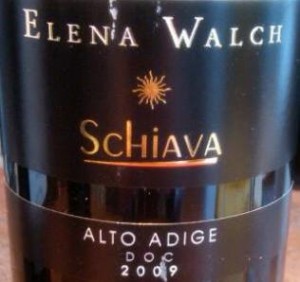 It's summer in the city and yet I am drinking just about equal parts red, white and rose. What gives? The temperature - of my red wines, that is!
Talking to people every day about wine I know there is a misconception out there that red wine shouldn't go in the fridge. Believe me when I tell you that's far from the truth. Personally speaking, I've found the notion is reinforced when you go out to eat. More often than not if you go to a nice restaurant they are missing the mark with the temperature they serve their wines; it is a challenge for them to keep their glass pours cold enough because they are often refilling glasses or uncorking new bottles and the wine either never goes back into the wine fridge due to the turnover, or it comes from too warm a place on the shelf behind the bar where it is easily accessible.
It's summer in the city and yet I am drinking just about equal parts red, white and rose. What gives? The temperature - of my red wines, that is!
Talking to people every day about wine I know there is a misconception out there that red wine shouldn't go in the fridge. Believe me when I tell you that's far from the truth. Personally speaking, I've found the notion is reinforced when you go out to eat. More often than not if you go to a nice restaurant they are missing the mark with the temperature they serve their wines; it is a challenge for them to keep their glass pours cold enough because they are often refilling glasses or uncorking new bottles and the wine either never goes back into the wine fridge due to the turnover, or it comes from too warm a place on the shelf behind the bar where it is easily accessible.
At home you have the 'luxury' of getting it right. Remember, nowadays room temp is higher than it used to be. And in the summer that's even higher! My house sits at about 80 degrees during the day. My cellar is around 72 degrees in the summer. Red wine (depending on the grape and region it comes from) shouldn't really be served higher than 60 degrees! Here's a chart which breaks it down fairly well.
If you're wondering if it really matters at the end of the day, it does. A wine that's served too warm is wearing a mask - none of its personality has a chance to show let alone shine. Wake up the wine by simply putting it in the fridge for 20 or 30 minutes to get it to serving temperature. That's about the time it takes me to kick off my shoes after my day, flip through the mail and get dinner started. All you have to do is grab the bottle off the rack and get it in the fridge before you start your Unwinding Process!
Of course, there are also wines that fall into the "Chillable Reds" category. These wines don't just loose their mask they virtually frollick in the glass once they get the 40 minute fridge treatment! Beaujolais (France - grape type: Gamay) and Loire Valley Cabernet Franc are fans of a little enclosed "AC" aka your fridge; Nebbiolo, Barbera, Sangiovese, Sciava and Frappato are Italian grapes that are also chill-loving; Spanish Tempranillo that hasn't seen a lot of oak mind it either. If you are entertaining grab the chill bucket and give the wine an ice bath for 10 minutes and you are good to go. Refill the bucket with ice and let your guests enjoy the good life - and learn a new trick!


 At
At 
 Jaume used his pepito (plastic theif) to “steal” a bit of wine from each of the 2010 barrels enjoying their siesta (pre-aging/bottling) in barrels below the alfresco tasting porch so I could taste them each au natural. What an experience! This is the sort of opportunity that drives home the essence of varietal expression. Grenache is uniquely Grenache, with natural variation depending on the vineyard site; but at the end of the day, a Granny Smith apple is too tart to be called Macintosh just like Grenache is too red-berry fruited to be called Mouvedre, a more smoked meat, gamey, blueberry/redberry fruit flavored varietal. How varietals work together is what makes a particular Clos stand out in their efforts (aka when to pick, in what vessel one should ferment each varietal, and later, what balance of grapes will comprise the final wine).
Jaume used his pepito (plastic theif) to “steal” a bit of wine from each of the 2010 barrels enjoying their siesta (pre-aging/bottling) in barrels below the alfresco tasting porch so I could taste them each au natural. What an experience! This is the sort of opportunity that drives home the essence of varietal expression. Grenache is uniquely Grenache, with natural variation depending on the vineyard site; but at the end of the day, a Granny Smith apple is too tart to be called Macintosh just like Grenache is too red-berry fruited to be called Mouvedre, a more smoked meat, gamey, blueberry/redberry fruit flavored varietal. How varietals work together is what makes a particular Clos stand out in their efforts (aka when to pick, in what vessel one should ferment each varietal, and later, what balance of grapes will comprise the final wine).






